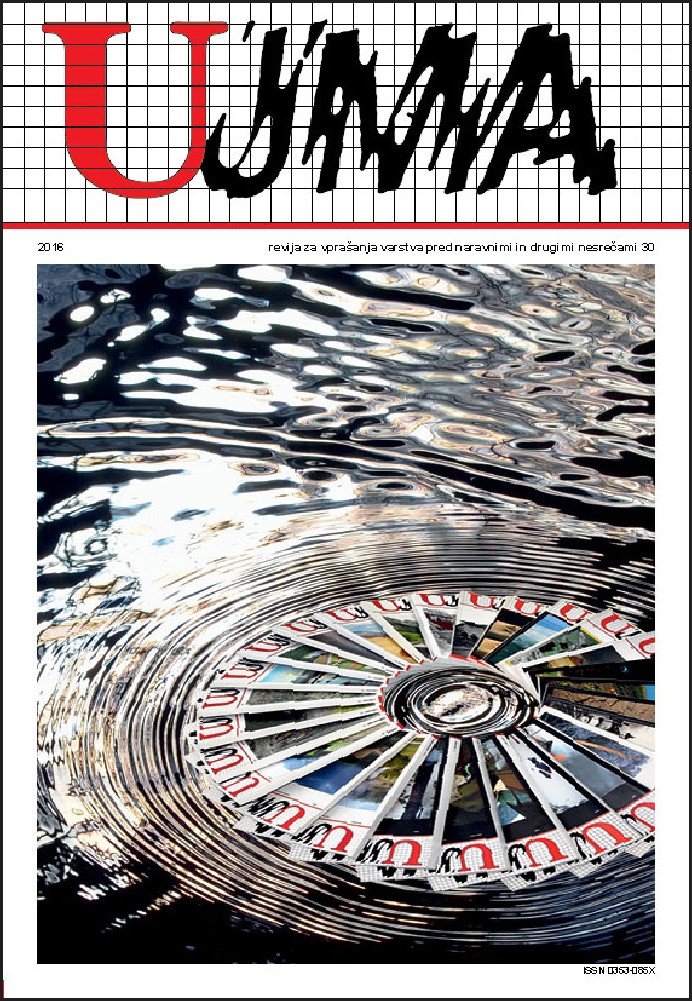SEISMOMETER PERFORMANCE CONTROL
Abstract
The modern seismometer is a device that converts the ground movement into an electrical signal. For the proper interpretation of the ground movement we need to know the relationship that connects both quantities. For each seismometer, this relationship is given by the producer in the accompanying documents. Due to various external factors, the dynamic properties of a spring pendulum as well as the properties of the built-in magnets and other electronic components in a seismometer can change with time. Therefore, the correct functioning of the seismometer is controlled in different ways and at different time intervals. The most accurate control is absolute calibration of the seismometer in the laboratory, but for various important reasons it is not implemented in Slovenia. The seismometer is controlled from time to time with the reference seismometer, periodically with test signals, and almost on a daily basis by detecting anomalies in the seismic records with help of correlation and power spectral density.
References
Hutt, R. C., Evans, R. J., Followill, F., Nigbor, L. R., Wielandt, E., 2010. Guidelines for standardized testing of broadband seismometers and accelerometers. USGS Open-File Report 2009–1295, U. S. Geological Survey.
Pavlis, L. G., Vernon, F. L., 1994. Calibration of Seismometers Using Ground Noise. Bul. Seis. Soc. Am. 84, 1243–1255.
Ringler, A. T., Hutt, C. R., 2010. Self-Noise Models of Seismic Instruments. Seis. Res. Lett., 81, 972–983.
Ringler, A. T., Hutt, C. R., Persefield, K., 2013. Seismic station installation orientation errors at ANSS and IRIS/USGS stations. Seis. Res. Lett., 84, 926–931.
Tasič, I., Mali, M., Sinčič, P., 2010. Posodobitev potresne opazovalnice VNDS, Potresi v letu 2009, Agencija RS za okolje, Urad za seizmologijo in geologijo, Ljubljana, 32–35.
Tasič, I., Runovc, F., 2012. Seismometer self-noise estimation using a single reference instrument, J Seismol., 16, 183–194.
Tasič, I., Runovc, F., 2013. Determination of a seismometer’s generator constant, azimuth, and orthogonality in threedimensional space using a reference seismometer, J Seismol., 17, 807–817.
Tasič, I., Runovc, F., 2014. The development and analysis of 3D transformation matrices for two seismometers, J Seismol., 18, 575–586.
Larsonnier, F., Nief, G., Dupont, P., Millier, P., 2014. Seismometers calibration: comparison between a relative electrical method and a vibration exciter based absolute method. IMEKO 22nd TC3, 12th TC5 and 3rd TC22 International Conferences, Cape Town, South Africa, dosegljivo na http://www.imeko.org/publications/tc22-2014/IMEKO-TC22-2014-013.pdf.
Wielandt, E., 2012. Seismic sensors and their calibration. Chapter 5, in: New Manual of Seismological Observatory Practice (NMSOP-2), IASPEI, ed. Bormann, P., 1–51.
Downloads
Published
Issue
Section
License

This work is licensed under a Creative Commons Attribution-NonCommercial-NoDerivatives 4.0 International License.
The articles are made available to the public under Creative Commons Attribution-NonCommercial-NoDerivatives 4.0 International (CC BY-NC-ND 4.0).


